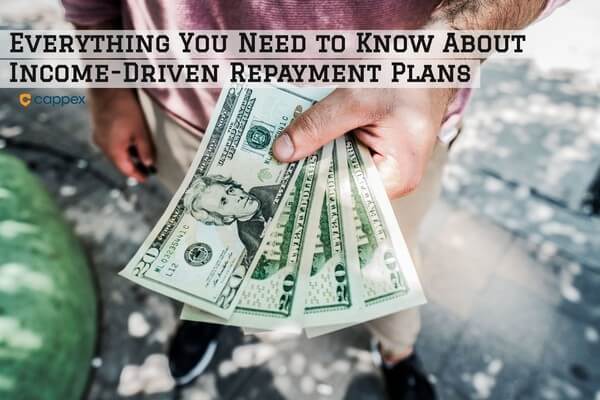Everything You Need to Know About Income-Driven Repayment Plans

If your total student loan debt exceeds your annual income by the time you graduate, don’t fret! You have the option to pay back your loans using an income-driven repayment plan. These repayment plans base the monthly payment on a percentage of your discretionary income, not the amount you owe.
Loans will take longer to pay off using one of these repayment plans, but they may be the best option if you have no way to increase your income or have decided to pursue public service loan forgiveness. You have several options when it comes to which plan to select.
Pay-As-You-Earn Repayment (PAYER)
This is the best of the income-driven repayment plans, because it has the lowest monthly payments (10% of discretionary income) and the remaining debt is forgiven after 240 payments (20 years), not 300 payments (25 years). But, only borrowers who have at least one federal student loan first disbursed on or after October 1, 2011 and no loans prior to October 1, 2007 are eligible for this repayment plan.
Income-Based Repayment (IBR)
This plan has slightly higher monthly payments (15% of discretionary income) and the remaining debt is forgiven after 300 payments (25 years). However, this plan is available to everybody, regardless of when they borrowed and whether they borrowed from the guaranteed student loan program (FFELP) or the direct loan program (DL).
Revised Pay-As-You-Earn Repayment (REPAYER)
The stated goal of this repayment plan is to make the benefits of the PAYER plan available to all borrowers, not just those with recent loans. But, REPAYER increased the forgiveness term from 20 to 25 years for borrowers who have one or more graduate student loans. REPAYER also introduces a marriage penalty for married borrowers, basing the loan payments on the combined income. The marriage penalty in the other income-driven repayment plans can be avoided by filing separate returns.
The monthly payment under REPAYER is also uncapped, increasing as the borrower’s income increases. Borrowers who expect their income to increase, who will pursue a graduate or professional degree or who plan to get married may opt for an IBR.
Income-Contingent Repayment (ICR)
This has the highest monthly payments (20% of discretionary income), a higher definition of discretionary income (subtracts 100% of the poverty line from adjusted gross income, instead of 150%) and the longest forgiveness term. Monthly payments are not capped and will increase as income increases. Most new borrowers choose IBR or PAYER instead of ICR.
Extra Information
With all four income-driven repayment plans, the loan forgiveness period is reduced to 120 payments (10 years), if the borrower works an eligible, full-time public service job while repaying their federal student loans in the direct loan program. Public service jobs include working for city, county, state or federal government, members of the U.S. Armed Forces, or working for a tax-exempt 501(c)(3) charitable non-profit. The forgiveness under public service loan forgiveness is tax-free, while the 20 or 25-year forgiveness is taxable under current law.
ICR, PAYER and REPAYER require the borrower’s loans to be in the Direct Loan program. IBR is available to borrowers in both the FFELP and DL programs. Borrowers in FFELP may also consolidate their loans into the DL program at StudentLoans.gov to gain access to the other income-driven repayment plans.
Just remember – in order to remain eligible for an income-driven repayment plan, you must submit income documentation every year. If you sign up for one of these plans and your financial situation ends up changing within a few years, you can always opt for a different payment plan.